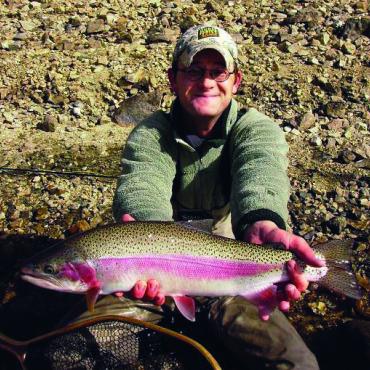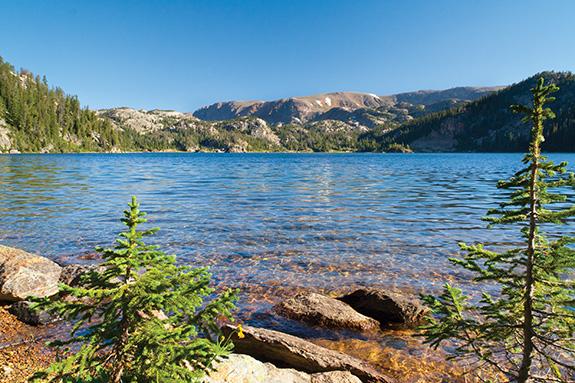Higher Casting
As a guide and outfitter, I’m often asked where I like to fish when I’m not working, and while I love moving water, few things more rewarding than pulling fish out of high-alpine lakes. Erase the guesswork by using these tips and make your next high-country fishing trip a success.
Lake Choice
Most alpine lakes in southwest Montana didn’t historically contain fish, and some still don’t. Check out fwp.mt.gov and search for promising locations in the section on fish-stocking data. The date, size, type, and number of fish stocked are listed by water-body name; if the lake you’re eyeing doesn’t have a name, there’s a good chance it doesn’t have fish. There are also several books dedicated to fishing high-country lakes. One of my favorites is Fishing the Beartooths, by Pat Marcuson. Consider the nature of your chosen lake as well; if the lake has decent inflows and outflows, it likely has some spawning habitat. This means that the stocked fish will likely be able to breed, which can lead to a wider variety of fish sizes. It is also important to take into account the elevation of the lake; the higher the altitude, the shorter the season, which can affect fish size, diet, and feeding habits.
Gear
The best all-around rod for backcountry trips is the Eagle Claw Trailmaster spin-fly combo. This is a four piece that can throw 6-weight line with ease, and if conditions make fly fishing difficult, a quick flip of the handle converts it into a spin-casting or bait rod. If your dinner plans include fish, having lures or bait as a backup can make you a campfire hero.
When choosing flies and lures for backcountry angling, keep things simple. Only bring what you’ll likely use—size 16 Royal Wulff, size 18 Griffith’s gnat, and size 16-18 parachute Adams should foot the dry-fly bill. Depending on the time of year and the lake you’re fishing, a couple of basic hopper and ant patterns can be worth toting along as well. I always pack a few string leeches; black, olive, and brown are all proven colors. Dropping a soft-hackle nymph off these streamers is highly effective, and these flies can also imitate emergers if the fish are sipping the surface but ignoring dries. If you’re going the spin route, an ultralight reel and a couple #1 gold Mepps or Panther Martins usually work. Don’t forget to pack a few BB split-shot and a small spool of 3X or 4X tippet. Again, a few small bait hooks, snap swivels, and a casting bubble can also help ensure success. If you have to go the bait route, just overturn a log or rock.
Don’t overburden yourself with excess tools. A small Swiss Army knife with scissors is a good substitute for nippers, and the Leatherman on your belt is more than sufficient for hook removal.
Tactics
Fish in alpine lakes actively seek out food, usually cruising around in search of their next meal. If the first few casts don’t produce, move. Pay close attention to shallow areas where insects hatch; often times one can spot cruising fish which makes them easier to target. A long-distance cast is a great advantage on a lake, but trees or topography often get in the way of your back-cast. This is when the casting bubble and spinning reel can help even out the odds. If weight and space are not an issue, I recommend a float tube and wading gear. Getting into the deeper areas of the lake will produce more and bigger fish. Even the most remote lake can get a fair amount of fishing pressure during peak season, so schedule alpine-lake outings mid-week. If you plan on dining on your catch, always practice proper bear-safety protocol for food storage, preparation, and disposal of fish entrails.












